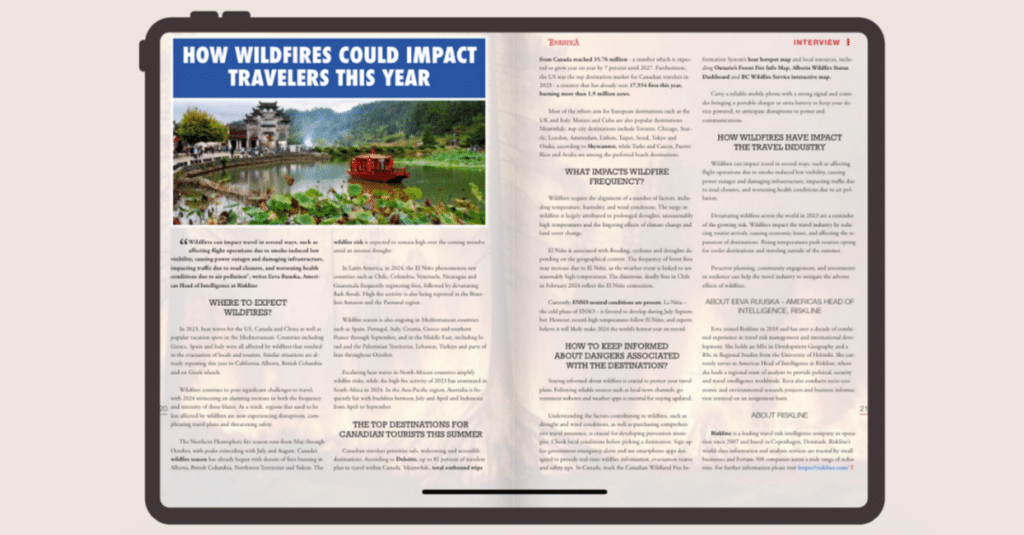“Wildfires can impact travel in several ways, such as affecting flight operations due to smoke-induced low visibility, causing power outages and damaging infrastructure, impacting traffic due to road closures, and worsening health conditions due to air pollution”, writes Eeva Ruuska, Americas Head of Intelligence at Riskline.
Where to expect wildfires?
In 2023, heat waves hit the US, Canada and China as well as popular vacation spots in the Mediterranean. Countries including Greece, Spain and Italy were all affected by wildfires that resulted in the evacuation of locals and tourists. Similar situations are already repeating this year in California, Alberta, British Columbia and on Greek islands.
Wildfires continue to pose significant challenges to travel, with 2024 witnessing an alarming increase in both the frequency and intensity of these blazes. As a result, regions that used to be 7 less affected by wildfires are now experiencing disruptions, complicating travel plans and threatening safety.
The Northern Hemisphere fire season runs from May through October, with peaks coinciding with July and August. Canada’s wildfire season has already begun with dozens of fires burning in Alberta, British Columbia, Northwest Territories and Yukon. The wildfire risk is expected to remain high over the coming months amid an intense drought.
Read the full article on page 20 in Touristica International.
Photo credits: Touristica International

